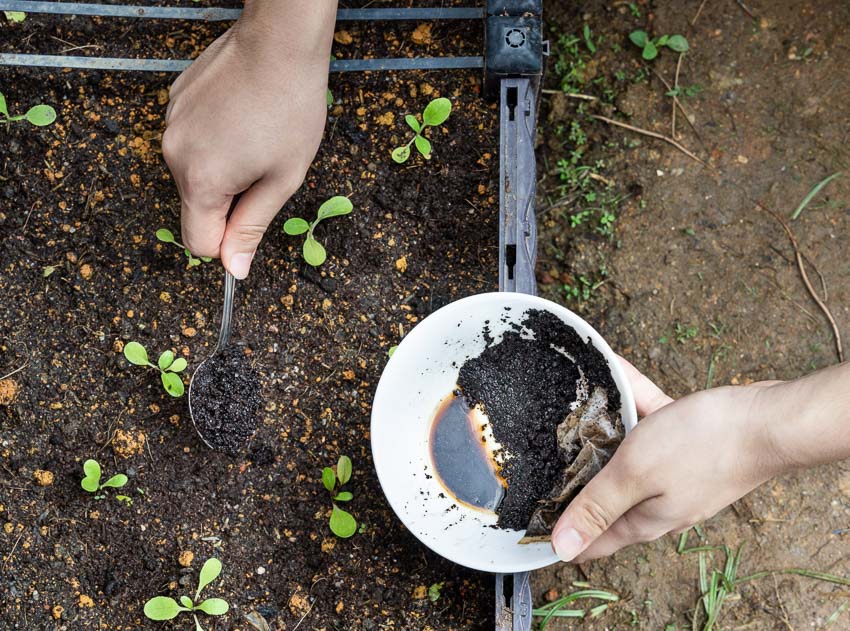Everyone knows about the benefits of coffee for humans, but did you know that you can use coffee grounds for plants? Instead of throwing used coffee grounds in the trash, learn how to use them in your garden or compost and take advantage of their many benefits.
Are Coffee Grounds Good for Plants?
Coffee grounds contain many of the key nutrients that plants need. When used correctly, they can enhance the health of your plants by providing nitrogen, potassium, phosphorus, and other trace minerals.
Nutrient Composition of Coffee Grounds
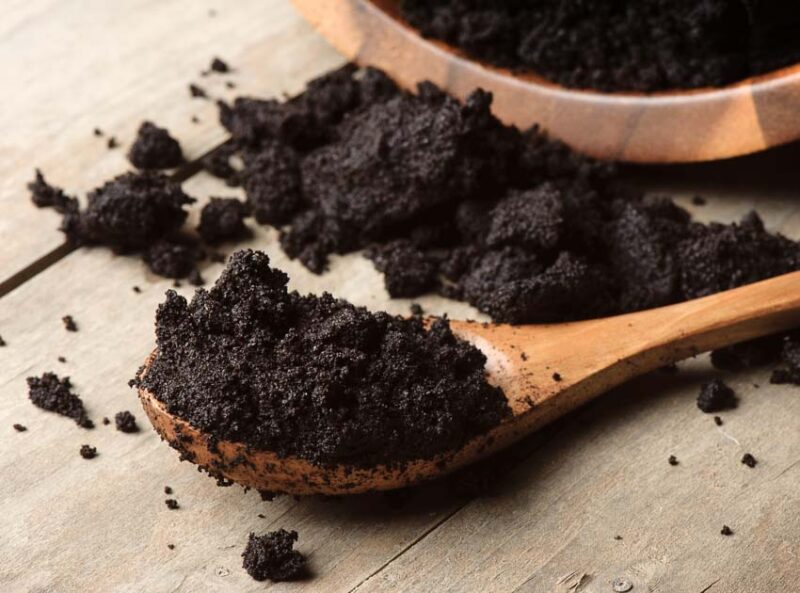
Coffee grounds are rich in nitrogen, one of the primary nutrients plants need for lush, green growth. Discover more about the composition of coffee grounds.
The rich nitrogen content and its benefits
Coffee grounds contain about 2% nitrogen by volume, which is enough to help plants grow. Nitrogen supports critical roles in plant growth, making it one of the most essential nutrients for plants.
Nitrogen is an essential nutrient that plants use for photosynthesis because it is a component of the chlorophyll molecule. It is the building block of protoplasm in plants, a translucent substance in plant cells that sustains life and supports cellular activity.
Other micronutrients present and their roles
Coffee grounds contain other vital nutrients for plant growth, including about 0.06% phosphorus and 0.6% potassium by volume. They also contain micronutrients and trace minerals, including the following:
- Calcium
- Magnesium
- Boron
- Copper
- Iron
- Zinc
What Do Coffee Grounds Do for Plants?
Like any other soil amendment, coffee grounds in the garden can change the structure of soil and impact pH levels.
Soil aeration and drainage improvements
Compared to soil, coffee grounds have a coarse structure that lets in air. Soil aeration is important because it allows oxygen, another vital plant nutrient, to reach plants’ roots.
The organic matter and coarse structure of coffee grounds also improve drainage, which is important for plant health. Soils that don’t drain properly can suffocate plants’ roots, depriving them of oxygen and making it impossible for them to take in other nutrients.
Pest repellent properties
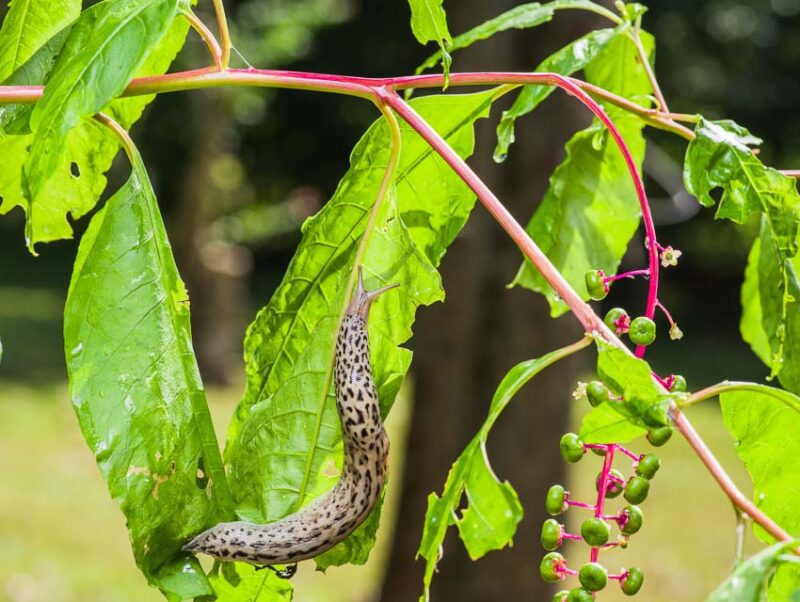
Coffee repels several different pests for various reasons. Coffee grounds repel slugs and snails because they dislike caffeine. They also work on mosquitoes because they mask other scents and make it hard for them to find their targets.
The pungent smell and acidic nature of coffee grounds also make them small animal repellents. They are excellent for keeping away everything from raccoons and skunks to gophers, moles, and rats and mice.
Effects on soil pH
Coffee is slightly acidic, so it makes your soil more acidic. After it decomposes, the soil pH balances out, but until then, if you use too much, it can make your ground too acidic for plants. This includes acid-loving plants like blueberries.
Use a light layer of coffee grounds on the top of your soil and rake it in lightly. It won’t take long for the coffee grounds to decompose. However, if you use too much, you risk making your soil too acidic.
What Plants Like Coffee Grounds?
Plants that love coffee grounds, such as blueberries and azaleas, prefer acidic soils. Learn more about what types of plants like coffee grounds and how to moderate the use of coffee grounds in your garden for the best results.
Acid-loving Plants and Coffee Grounds
Most plants prefer a neutral soil pH of about 6.5 to 7.5, but some are acid-loving and prefer a pH of 5.5 to 6.5.
Examples of acid-loving plants
Here are some acid-loving plants that will benefit from coffee grounds in the garden:
- African violets
- Azaleas
- Blueberries
- Cabbage
- Carrots
- Cranberries
- Cyclamen
- Hydrangeas
- Orchids
- Parsley
- Petunias
- Potatoes
- Rhododendrons
- Roses
- Wild Strawberries
Coffee grounds for hydrangeas will make them turn blue because of the acidity in the soil. Don’t use coffee grounds for your hydrangeas if you want them to be pink.
How coffee grounds benefit these plants
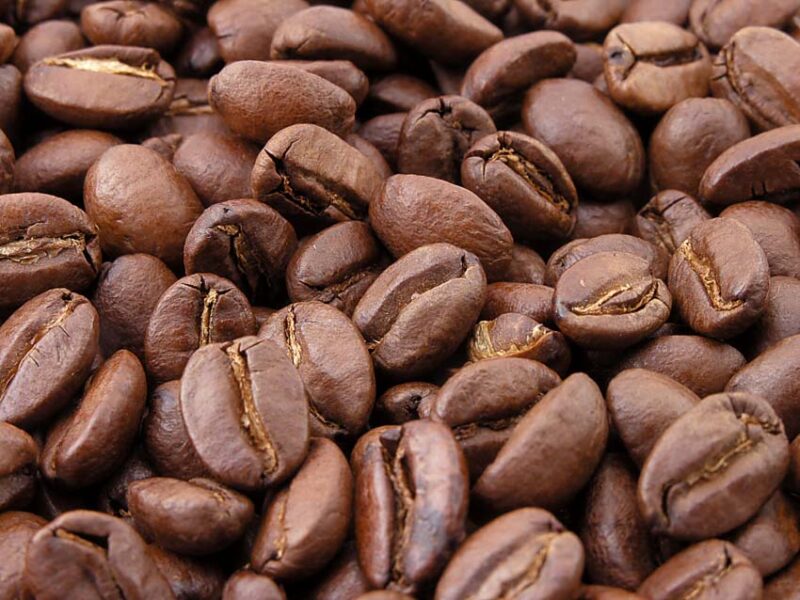
Contrary to popular myth, coffee grounds aren’t highly acidic. They have an average pH of 6.5 to 6.8, and most of the acid in the coffee beans ends up in the coffee.
However, if you use a lot of coffee grounds over a significant time, you can lower the pH of your soil enough that it will affect the growth of some types of plants.
Using a soil test kit can help you avoid lowering the pH too much, even for acid-loving plants. Test your soil regularly to determine the pH of your soil. It also helps to know what pH levels are best for the plants you’re growing.
Neutral to Alkaline Soil Preference Plants
Some plants prefer neutral to alkaline soil. The pH of coffee grounds can lower the soil pH enough that these plants won’t thrive if you use coffee grounds around them. Again, it’s important to test your soil and understand the needs of your plants.
Moderation in the use of coffee grounds
Anything from 7.0 to 7.5 pH is considered neutral to slightly alkaline. Many plants will grow in slightly alkaline soils, including vegetables like beans, peas, garlic, and members of the Brassica family, like cauliflower and broccoli.
Moderation is essential when applying coffee grounds on plants, whether in your garden or containers. It’s also important to understand that large amounts of coffee grounds, which require nutrients to decompose, can tie up soil nutrients.
Enhancing soil properties through composting
Using coffee grounds to make your own compost is one of the best ways to take advantage of the benefits of coffee grounds in a way that promotes healthy soil and plant growth.
Compost requires about 50/50 “green” and “brown” matter to work. The nitrogen levels in coffee grounds put them in the “green” category, and they can be combined with materials like dead leaves and straw mulch to create a balanced composting mixture.
What Plants Don’t Like Coffee Grounds?
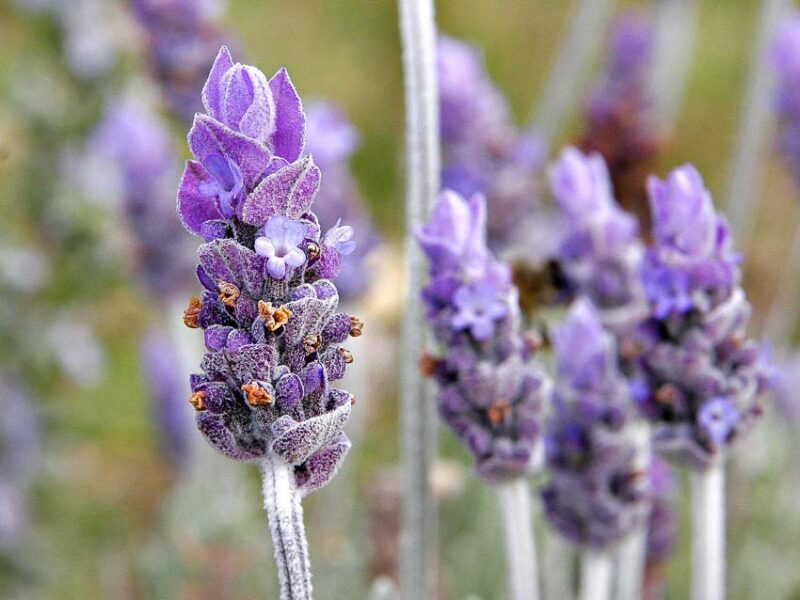
Which plants don’t like coffee grounds? Alkaline-loving plants won’t appreciate coffee grounds the way acid-loving plants do.
Alkaline-loving Plants
Plants that like soil pH levels over 7.5 are considered alkaline-loving plants, and coffee grounds, which are about 6.5 to 6.8, won’t do them any favors.
Examples of plants sensitive to acidity
Here are some plants that are sensitive to acidic soils:
- Lavender
- Geraniums
- Asparagus fern
- Chinese mustard
- Italian ryegrass
You should also think twice before giving coffee grounds to cacti and succulents, many of which prefer slightly alkaline soils.
Precautions while using coffee grounds around these plants
If you want to use coffee grounds as pest control around alkaline-loving plants, be aware that using too much can impact the health of your plants. You can offset the effects of coffee grounds by balancing them with an alkaline soil amendment.
Here are some alkaline soil amendments to use to increase soil pH and balance out coffee grounds in the garden:
- Wood ashes
- Baking soda
- Garden lime
- Dolomite
Seedlings and Young Plants
Coffee grounds aren’t recommended for seedlings and young plants because too much caffeine from the coffee grounds can slow down the formation of roots and inhibit plant growth. Excess caffeine also leads to tissue necrosis in plants (dead plant cells).
Another concern regarding using coffee grounds for plants is that coffee contains allelopathic chemicals. Some plants produce allelopathic chemicals to inhibit the growth of other plants so they don’t have to compete with them. Since young seedlings are more susceptible to these chemicals, it’s best to avoid using coffee grounds on them.
Other Uses for Used Coffee Grounds in the Garden
Coffee grounds are a well-known solution for many of the problems in your garden, from controlling pests to providing nutrients. Uncover helpful tips and tricks for using coffee grounds as a cure-all for your garden.
As a Natural Pest Deterrent
It doesn’t take much to convince coffee lovers that it’s a little bit magical, but when you discover how it can be used as a pest deterrent, you’ll be even more amazed.
Get rid of these common pests with coffee grounds:
- Slugs and snails–These mollusks hate caffeine and the abrasive texture of coffee grounds.
- Ants, wasps, and mosquitoes–Insects don’t like coffee grounds because the smell masks the pheromones they use to communicate with each other.
- Gophers, moles and voles–They don’t like the smell of coffee and will avoid it.
- Skunks, raccoons, and cats–Keep these larger pests out of your flower beds by using coffee grounds as mulch.
- Snakes–Coffee grounds interfere with their sense of smell, which they use to hunt.
Composting with Coffee Grounds
Discover how to use coffee grounds in your compost and the benefits they provide.
Tips for mixing coffee grounds into compost
There are many different ways to compost, including cold composting, hot composting, and vermicomposting with microorganisms and earthworms. No matter your method, coffee grounds are an excellent addition to the compost pile.
The best ratio for mixing ingredients in your compost pile is a 1:1 ratio of brown and green materials. “Brown” composting materials, like dead leaves, wood chips, sawdust, and straw mulch, won’t decompose on their own, and you need to add green materials to kick-start the composting process.
Coffee grounds are high in nitrogen and are considered a “green” material, along with fresh manure, grass clippings, and kitchen scraps.
Enriching the compost pile
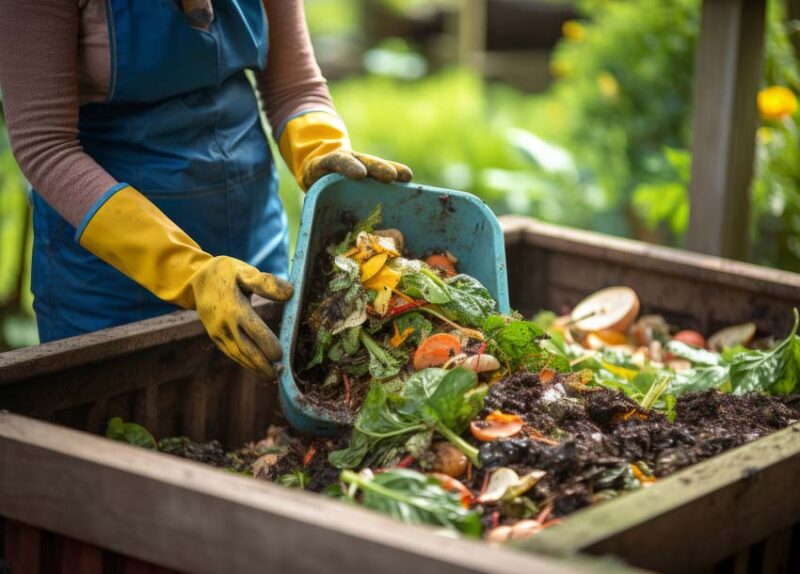
While coffee grounds are initially slightly acidic, once they are completely decomposed, they have a more balanced pH. They add valuable nutrients to your compost pile, and the compost can be used on various plants.
Most compost is slightly alkaline because the acids are neutralized during the composting process. If you’re curious, you can always test the pH of your compost to determine the pH level.
Mulching with Coffee Grounds
Coffee grounds can also be used as mulch, which will help with moisture retention and weed prevention. For best results, spread coffee grounds over your soil about ½ inch thick, then cover them with a layer of straw mulch.
Mulching with coffee grounds using this method not only helps your soil retain moisture but also provides your plants with nitrogen, gives the microorganisms in the soil something to digest, kills weeds, and acts as a pest repellent.
FAQs about Using Coffee Grounds in the Garden for Plants
Can I use flavored coffee grounds in my garden?
The flavor in flavored coffee grounds shouldn’t harm plants in your garden. Otherwise, it wouldn’t be safe for you to drink in the first place. Most flavor in coffee grounds is made from natural ingredients, and most dissolve in the water when you brew your coffee.
How often should I add coffee grounds to my plants?
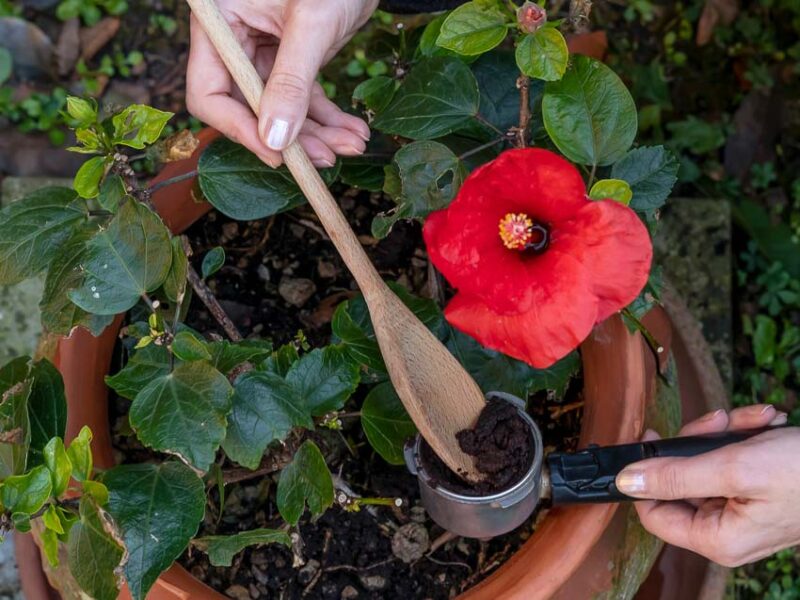
How often you should add coffee grounds to your plants depends on several factors. In a garden, where there is a lot of microbial activity in the soil that helps decompose the coffee grounds, you can add them more often than you can in houseplants.
Adding coffee grounds to your soil two or three times per growing season is about right for most gardens.
Can coffee grounds mold or attract fungi?
Coffee grounds are rich in organic matter and nutrients, and they will attract mold and fungi. This is one reason to rake them lightly into the top two to three inches of soil. That way, they add organic matter to the soil and make nutrients available to the plants.
How do I store excess coffee grounds for future use in the garden?
You can freeze excess used coffee grounds to use in your garden later. Or, you can add the coffee grounds to your compost. Since coffee grounds are rich in nitrogen, they help the organic matter decompose.
Are there concerns about caffeine content affecting plants?
Caffeine is a powerful stimulant, and while it initially speeds up biological processes in plants, including water and nutrient absorption, it can have a detrimental effect over prolonged periods or if plants are given too much.
Excess caffeine can affect the growth of plants, slowing down the formation of roots and plant growth by reducing protein production. It also leads to tissue necrosis, which is the death of plant cells.

